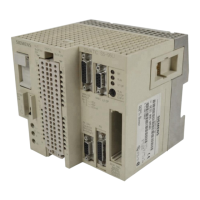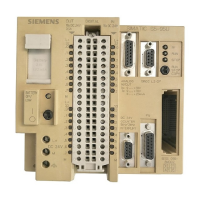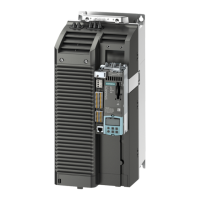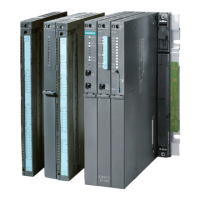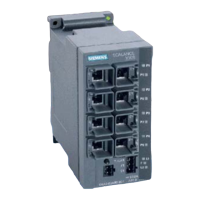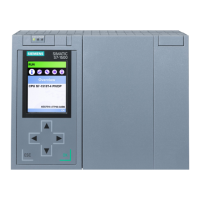S5-100U Technical Description
Table 2-1 gives information about the number and retentive characteristics (the internal memory
contents are retained/are not retained) of these timers, counters, and flags.
Table 2-1. Retentive and Non-Retentive Operands
Operand
Retentive
CPU 100 to 103
Non-Retentive
CPU 100 CPU 102 CPU 103
Flags 0.0 to 63.7 64.0 to 127.7 64.0 to 127.7 64.0 to 255.7
Counters 0 to 7 8 to 15 8 to 31 8 to 127
Timers
0 to 15 0 to 31 0 to 127
Arithmetic Unit
The arithmetic unit (ALU) consists of two accumulators, ACCU 1 and 2. The accumulators can
process byte and word operations.
Figure 2-3. Example of an Arithmetic Logic Unit’s Mode of Operation
Load
information
from the PII.
Transfer
information
to the PIQ.
Process
information
in ACCU 1 and ACCU 2.
Accumulator Design
Figure 2-4. Accumulator Design
ACCU 2 ACCU 1
Low byteHigh byte
15 8 7 0
15
8 7
0
High byte Low byte
Processor
According to the control program, the processor calls statements in the program memory in
sequence and executes them. It processes the information from the PII and takes into consideration
the values of internal timers and counters as well as the signal states of internal flags.
External I/O Bus
The I/O bus is the electrical connection for all signals that are exchanged between the CPU and the
S5-100U modules in a programmable controller.
EWA 4NEB 812 6120-02
2-5
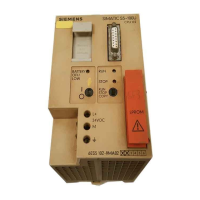
